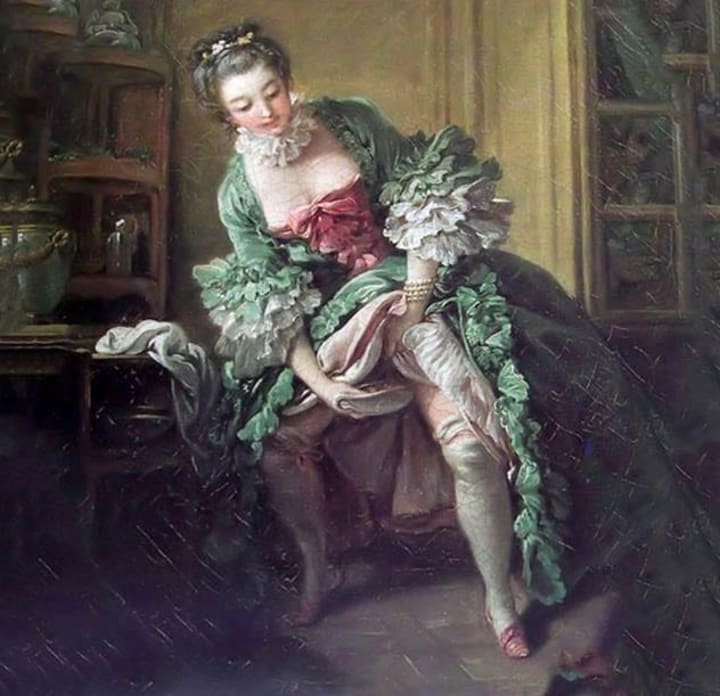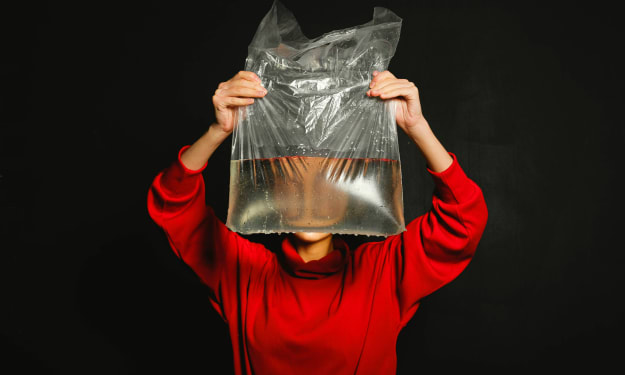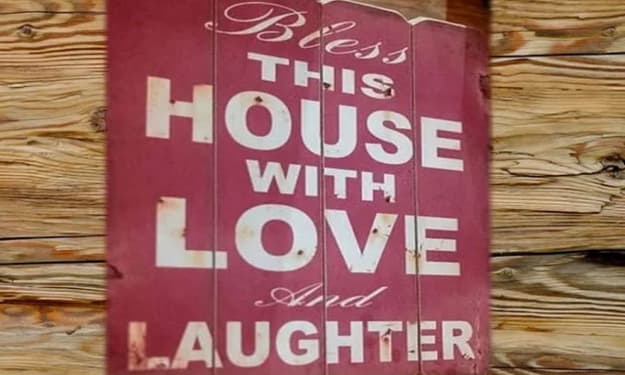Top 10 Incredible Smells
Discover the Magic of These Sensational Scents
Listen up, folks! As E.M. Forster said in his novel 'A Room With A View', every city has its own smell. And as a hobbyist perfumer, I've taken it upon myself to explore the smells of history. It all started with a rare vial of L'Origan perfume from 1905.
As soon as I opened the box, the scent hit me like a ton of bricks - and I mean that quite literally because the bottle had leaked. But hey, who am I to complain? I was immediately transported to the Paris of old, when the streets were filled with the intoxicating aroma of L'Origan. The newspaper reporter got it right - all of Paris truly did smell of it! The men who made this fragrance are long gone, but their legacy lives on. And lucky me, I'm now a part of it! Who knows, maybe someday people will be sniffing your perfume and saying, 'Ah, this is what the 21st century smelled like!'
And now, for the moment you've all been waiting for - a list of ten significant places and things and the scents that define them. But fair warning, folks - some of the content may be a bit unsettling. Brace yourselves!
1. Space

Did you know that space has a smell? It's true! Despite being a vacuum, there are certain odors associated with space. For example, there's a giant ball of sweet, fruity, rum-scented gas in the center of our galaxy (which is known as Ethyl Formate, by the way). It's a mystery as to how it got there.
Astronauts have also reported food-related smells in space, with some describing it as sulfurous and meaty. And when they repressurize the airlock and take off their suits, they've noticed a distinct odor of ozone - similar to burnt gunpowder or the smell of electrical equipment.
But perhaps the most interesting observation comes from International Space Station Science Officer, Don Pettit, who described the smell of space as metallic, with a sweet sensation. It reminded him of the pleasant smell of welding fumes from his college summers spent repairing heavy equipment for a small logging outfit.
Of course, in a vacuum, you can't smell anything directly. But the millions of particles floating around in space do have a scent, and when they adhere to the suits worn by astronauts or enter through the airlocks, that's when these observations are made. In fact, NASA has even tried to replicate the scent on Earth as part of their training for future astronauts. So there you have it - the unexpected smells of space!
2. Sundry Planets

It's quite fascinating to think about the different smells of planets in our solar system! Who knew that Venus would smell like rotten eggs, or that Jupiter would have layers of different scents depending on where you are? And it's interesting that some of these scents, like the almond-like smell of hydrogen cyanide on Jupiter, can also be found in more pleasant forms on Earth, such as in flowers like jasmine.
But at least we can be grateful that most of the planets don't have a distinct odor, so we won't have to worry about packing any air fresheners for our future space missions.
3. Death

It's interesting to note that some of the chemicals released during the decomposition of a human body are used in perfumes. It just goes to show that even the most repulsive smells can be transformed into something desirable with the right combination of ingredients. But let's be honest, nobody wants to smell like rotting flesh or feces! It's a good thing that perfumers are skilled at masking and blending scents to create something pleasant to the nose.
And as for the theory that the release of these chemicals serves as a warning signal, it's a fascinating idea that our bodies have evolved to communicate danger through smell. It's a reminder that even in our modern, technological world, our bodies still carry the legacy of our primitive ancestors.
4. Versailles Palace

Well, well, well, looks like the Queen of France, Marie Antoinette, has been getting a bad rap all these years for something she never even said! That's like blaming a cat for eating your homework, when we all know it was the dog. Anyway, Marie and her husband King Louis XVI lived in the majestic Versailles Palace, which is a must-visit spot in France. But don't let the grandeur fool you, folks - the palace was full of more than just delightful scents and luxurious treats.
No, no, no, it was also filled with the smells of two other p's: piss and poop. You see, in those days, the plumbing was subpar and the palace lacked proper facilities (only the royal apartments had flush toilets!). So, when nature called, the only option was a tiny porcelain pot called a bourdaloue. And to make matters worse, women didn't even wear underwear, so they just lifted their skirts and did their business in public. Yikes! But hey, when you're living in a massive palace, there's bound to be a quiet corner to sneak off to, right? And the best part? The servants would clean up after you later! Talk about service with a smile. All that combined with the smoke from faulty chimneys and overworked servants - let's just say the Palace of Versailles was a real "fragrant" experience.
In fact, the historic French candle maker, Cire Trudon, even made a candle that smells like the floors of Versailles! Imagine that - a regal perfume that radiates vapors of wax, candelabra, and palace, cut with the citrusy rays of the sun. But if you really want the full "palace experience", you might want to add your own "p's" to the mix. Hey, at least the candle doesn't cost an arm and a leg - just a cool $100 on Amazon.
5. The Roman Colosseum

Ah, the Roman Colosseum, the perfect place for a family outing! It had something for everyone: gladiator fights, animal hunts, and even Christian persecutions! But, let's be real, the Roman people were a bit sensitive to the smell of blood. So, the clever architects of the Colosseum came up with a genius solution: the velarium! This giant awning not only protected the audience from the sun and rain, but it also had hidden tubes that sprayed perfumed water to mask the smell of death! Talk about a multi-purpose invention.
And if that wasn't enough, they even had fancy fountains in the form of statues that spouted fragrant water. The primary ingredients? Saffron and verbena. Unfortunately, the European Union recently outlawed verbena in human skin contact products, so I guess we'll have to settle for less fragrant ways to keep cool.
6. Drugs

Well, well, well, looks like we have a little sniffing session on our hands! Who needs a fancy perfume collection when you can just take a whiff of some good old-fashioned drugs? Opium, the sweet scent of burnt marshmallows, perfect for those cozy winter evenings by the fire.
Heroin, with its strong aroma of vinegar, great for adding a little zest to your salad dressing. And who needs expensive floral perfumes when you can just take a deep breath of cocaine and enjoy the scent of methyl benzoate? But let's not forget about methamphetamine, which has a delightful combination of burnt plastic and cleaning products, perfect for when you want your home to smell like an industrial factory. And if you use it frequently enough, you can even enjoy the added bonus of smelling like ammonia! Who needs fancy perfumes when you can just become a walking drug factory?
7. The Titanic

Ah, the Titanic, a tale as old as time...or at least as old as 1912. And you know what they say, when you're on a luxurious ship like that, it's not just the views that take your breath away. Freshly varnished wood, lead-filled paint, and the aroma of roasting meats - it was a sensory overload up there in first class. Meanwhile, down in the freezing waters, an iceberg was just chilling (literally).
You could say it was the ultimate game of hide and seek, but with a scent that was hard to miss. I mean, who knew ice could smell metallic? Maybe if the crew had been equipped with some strong noses and a few air fresheners, things could have turned out differently. But hey, hindsight is 20/20, right?
8. Ancient Egyptian Temples

Ah, Ancient Egypt, the land of pharaohs, pyramids, and pungent perfumes. I was so obsessed with this civilization as a teenager that I even considered applying for a job as a mummy unwrapper. Alas, it never came to pass.
If you've ever been to a Catholic Church, you know the smell of frankincense and myrrh. But did you know that the Ancient Egyptians used the same resins in their temples? It's true! So, if you ever find yourself transported back to the time of the pharaohs, the first thing you'll notice is the sweet smell of incense. It's like walking into a candle shop, only with more mummies.
And speaking of mummies, the temples were also filled with flowers. Lotus blossoms and marsh plants were the most common. The lotus smelled sweet like fruit, while the marsh plants added an underlying scent of water and dirt. If you closed your eyes and took a deep breath, it was like you were standing in the middle of a swamp.
But wait, there's more! The temples were also filled with the scent of freshly baked bread and roasted meats, offerings to the gods. It was like walking into a bakery and a butcher shop all at once. And let's not forget about the milk, herbs, and vegetables. After a while, they lent a faintly sour and rotten scent to the whole temple.
All in all, it was a truly delightful mix of smells. Imagine the joy of Christmas morning combined with the stench of your gym socks after a long workout. Throw in the chanting of ancient priests, the sounds of exotic animals, and the musical instruments of street beggars, and you've got yourself a real party. Who needs modern air fresheners when you've got Ancient Egypt?
9. The Holocaust

In 1942 the Jewish Ghettos were disbanded by the Nazi government and mass deportations by train began. There were no stops for toilet breaks, and there were no amenities for those who were ill except for one bucket in the corner which, needless to say, very quickly was rendered unusable. The entire journey from city to camp was drenched in the stink of vomit, feces, and urine. The foulest aspects of man’s animal side were witnessed, within and without the trains.
For those in the camps who were witnesses to the cremation of bodies, the smell was unlike anything they had smelled before. When meat is cooked for eating, we smell simply the searing of flesh. Not so when a human body is burnt. The sickening smell experienced daily by those in the camps would have been comprised primarily of a beef-like scent from burning flesh, and a pork-like smell from human fat. This would be accompanied by the noxious odors of sulfur from burning hair and nails, a coppery metal smell from burning blood and iron-rich organs, and spinal fluid which burns with a sickly sweet musky odor reminiscent of perfume. It is a smell so thick, it can almost be tasted.
And then there was the aftermath. American GIs arriving to liberate the camps claimed they could smell the stench long before they saw them. “The smell covered the entire countryside . . . for miles around.” One Private said “disease – typhus, dysentery, and tuberculosis – was universal. The crematory had been operating around the clock. . . . [T]he stench of death and of piles of human excrement was overpowering.
10. Sanctity

Did you know that saints have a particular smell? Yes, it's true! Some of them emit a sweet fragrance that is known as the "odor of sanctity." It's quite different from the smell of sulfur, which is associated with death and decay.
But let's be honest, if you could choose between smelling like honey, butter, roses, and jasmine, or like vomit, feces, and urine, which one would you prefer? I think I know the answer to that one!
Unfortunately, I don't think there's a fragrance called "Eau de Saint" that we can all buy to smell like a holy person. But maybe we can just carry around some rose petals or stick some incense in our pockets and hope for the best. After all, who wouldn't want to smell like a saint, right?







Comments
There are no comments for this story
Be the first to respond and start the conversation.